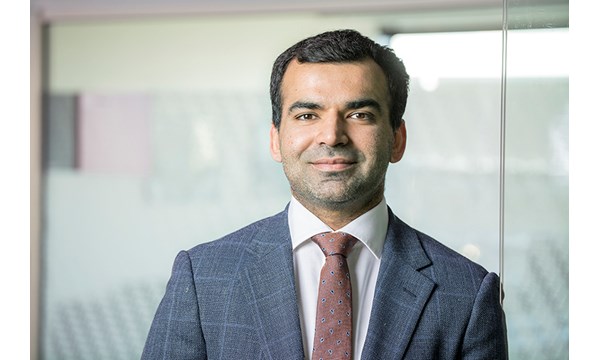Find out how our Consulting team can help you and your organisation
Investing in the energy transition
Six capital allocation principles for power and renewables investors
1 minute read
Prashant Khorana
Director, Power & Renewables Consulting

Prashant Khorana
Director, Power & Renewables Consulting
Prashant is Director, Data Product Owner – Asset Valuations within Wood Mackenzie's research and data organisation.
Latest articles by Prashant
-
Opinion
What we learned from conversations with power and renewables investors in 2024
-
Opinion
Underwriting Battery Energy Storage Systems (BESS) as an asset class
-
Opinion
10 transaction themes for private equity and principal investors in 2024
-
Opinion
What we learned from conversations with power and renewables investors in 2023
-
Opinion
How power and renewables investors should navigate the Inflation Reduction Act and recent power market volatility
-
Opinion
Who will foot the bill for the energy transition in Asia-Pacific?
While we’ve arguably never lived in more uncertain times, one thing is clear: the energy transition is gathering pace and prominence – both as a topic of discussion and as an investment opportunity.
It’s impossible to predict exactly how capital allocation behaviour for power and renewables will develop over the next two decades. However, we can reasonably expect two things: that active investors will continue to take the lead in mobilising capital in the risk-on spectrum of energy transition infrastructure for the foreseeable future; and that these firms will continue to sell down assets to risk-off investors.
So, what do major investors need to know to capitalise on the opportunity offered by the energy transition over the coming decades? This report outlines six capital allocation principles to keep in mind.
1. Don’t underestimate the energy transition investment opportunity
Investors tend to underestimate the opportunity set as headline wind and solar spend numbers tend to look flat at around US$200-250 billion a year. However, flat headline total spend numbers are primarily a function of wind and solar cost per kW declines, rather than MW deployment reductions. Capital allocators should think about the cumulative installed base rather than the annual installed base.
The fragmentation of ownership in the power value chain means it’s also easy to forget that the energy transition narrative is about transmission and distribution (T&D) investments as well as generation. Allocators could capitalise on the opportunity in T&D since many markets, such as Brazil and Greece, offer authorised returns of 8-12%, which is better than contracted wind and solar in many OECD markets.
We expect over US$4 trillion in T&D investments combined through to 2030.
2. Think global – hyper-localisation will disappear from the power value chain over time
By making power-to-X and green hydrogen part of any growth strategy for renewables, investors can free themselves from the structural problem of hyper-localisation as a constraint and think about renewables on a global scale.
Consider the case of an emerging market power investment opportunity as an illustration. One of the reasons for the lack of investment in power in emerging markets – even those with high levels of ease of doing business – has been the lack of bankable contracts with creditworthy local counterparties. (By contrast, oil exploration and production firms are more free to pursue opportunities in difficult operating environments, since oil can be transported, stored and supplied to a global customer base).
However, once the power can be converted into green hydrogen, and the infrastructure to store and transport that hydrogen is in place, it is usable anywhere. The power generated from green molecules will then become the cheapest energy supply wherever hydrocarbons don’t receive subsidies.
This structural shift will create a classic case of what Clayton Christiansen called ‘The Innovator’s Dilemma’. In his seminal work, Christiansen argued that firms that doubled down on the low-cost product that would eventually become the mainstream product would emerge as the winners over the long term. And while going into a market or product that is lower margin might seem dilutive at first, it could eventually lead to revenue growth opportunities that the higher-margin segment might not offer.
3. Consider all competitors in the power value chain
It's important to consider the whole range of entities that compete in the power value chain, including utilities, infrastructure funds, oil and gas firms, and large single-country operators. All have different characteristics.
For example, let’s compare oil and utility companies with a total market capitalisation of around US$1.1 trillion. Oil companies in this subset spend about 10% of their sales on new opportunities, highlighting that investable opportunities are shrinking. In contrast, utility peers invested almost 30% of revenue in 2020 despite the pandemic. The utility firms also managed to deliver operating margins (EBIT) of 18% on average, versus -3% for the oil firms. And utility firms’ average return on invested capital was around 6% on a trailing 12-month basis, compared to around -7% for the oil companies. Operating performance illustrates that utility sector investment opportunities have structurally lower downside risk.
Oil and gas companies that double down on lower-cost clean-energy opportunities will likely grow their top line and market capitalisation over the long term. However, those that stick with the status quo will eventually be overtaken by utilities and independent power producers in terms of enterprise value and market capitalisation. Some of the largest utilities in our subset will inevitably go on to become US$300 billion-plus market companies this decade.
4. Be rigorous but realistic regarding returns
A significant amount of investor frustration in renewables investing comes from the fact that no two parties use the same starting point when talking about returns. Some use levered while others use un-levered; tax, inflation and currency-related considerations vary significantly by country; and buy-side, sell-side and industry analysts use different starting points.
Our discussions with capital allocators in the renewables domain often highlight arguably irrational exuberance when it comes to returns. Levered returns of more than 10% are possible. Our view is that the narrative around ‘winning an auction’ at any price is largely overblown. A lack of understanding of comparability of the ‘return’ metric is one reason for this exuberance.
5. Don’t worry so much about Big Oil eating your lunch
Although major oil firms have made inroads into renewables, they are not the dominant players in terms of either capital or GW deployment as of today. Utilities currently mobilise large capital pools into renewables, and real asset investors such as infrastructure funds will continue to act as their buy-side partners. The develop, build and sell-down model is tried and tested and will remain the standard in the world of renewables.
A key reason oil and gas firms have historically been uncompetitive when bidding for secondary market purchases for operating and de-risked assets has been the inherent difference in the cost of capital. An onshore wind or solar farm with a BB credit-rated entity can secure funding at Libor plus 90-100 bps. By comparison, corporate debt financing in the oil and gas industry can be as high as Libor plus 500 bps.
This material difference in the cost of capital means the threat to utilities and infrastructure funds from Big Oil is sometimes overstated – at least for now.
6. Balance risk-off strategies with platform-style plays in high-growth markets
Depending where on the risk-return spectrum one wants to play, there are plenty of opportunities to consider. Given a hypothetical US$10 billion in capital to deploy, risk-off strategies may suit the bulk of the capital pool, since defensible and contracted opportunities give shareholders peace of mind and provide steady cash flow for the business.
However, being fully risk-off leaves no room for value-add and high-return capture. Allocating a portion of capital to platform-style plays in risky but high-growth markets and low bankability markets could be an opportunity worth exploring.
Talk to an expert
Prashant Khorana advises global utilities, IPPs, PE funds and other asset owners on technology neutral (onshore wind, offshore wind, solar PV, energy storage) and market neutral strategies.
Get in touch if you have questions about the energy transition opportunity.

Prashant Khorana, Director, Power & Renewables Consulting









